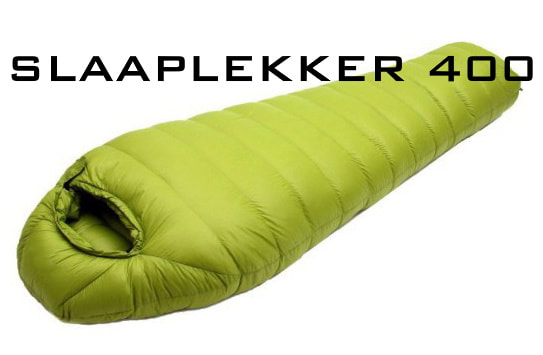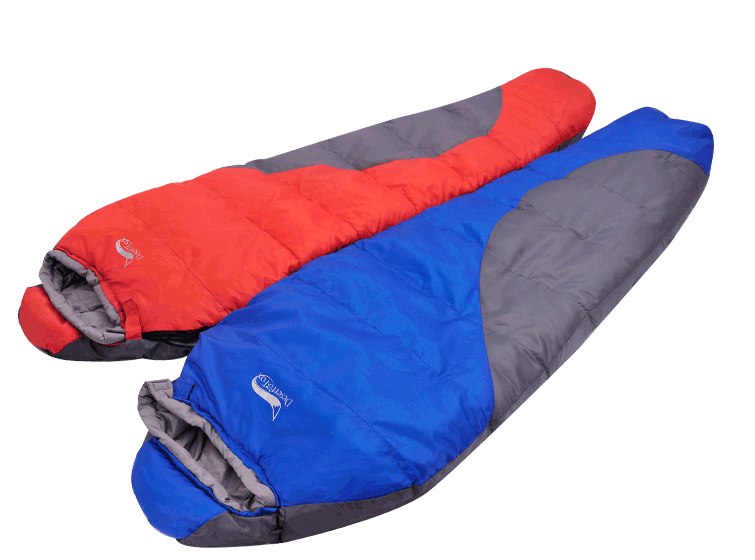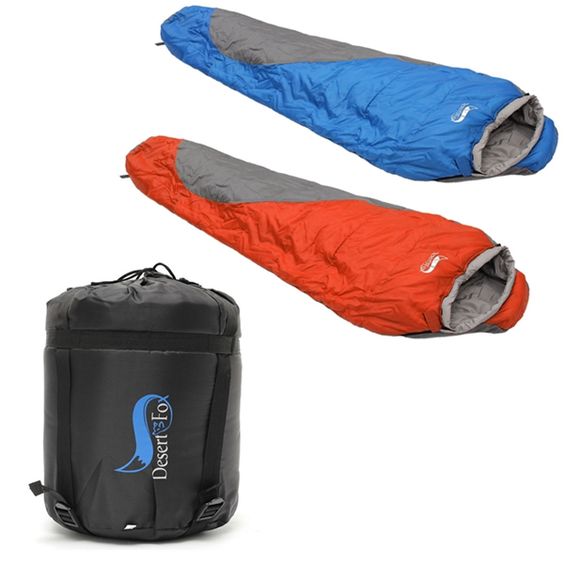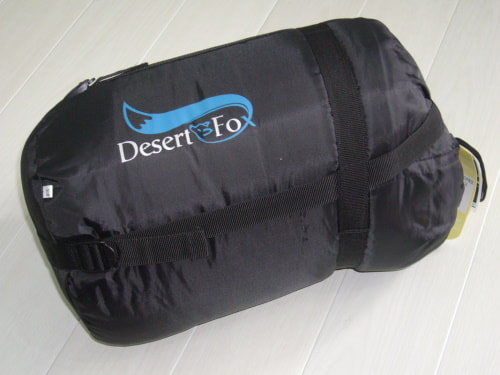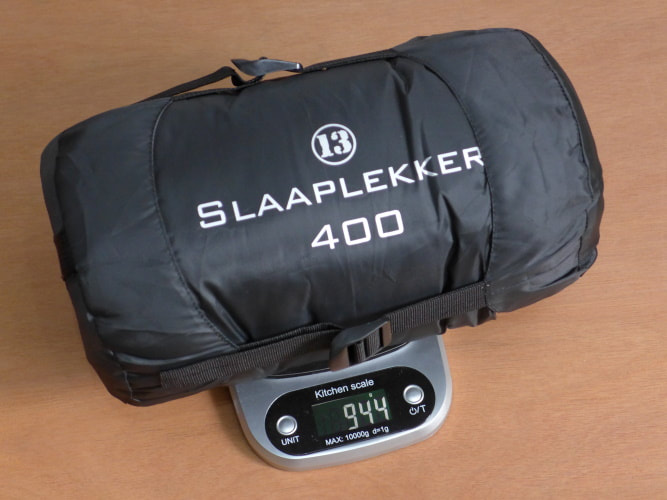Sleeping Bags
Just as with tents, when it comes to sleeping bags, there is an enormous selection to choose from. And, just as with tents, there will be compromises and trade-offs to be made.
In most cases for backpackers, the three heaviest and bulkiest single items they carry are: the tent, the sleeping bag and the sleeping mat.
Though usually the lightest of the three, sleeping mats can be space hungry, particularly foam sleeping pads which are large and bulky and often seen strapped to the top or bottom of a rucksack. However, there are sleeping mattresses (like the inflatable UltraMat-M and AmberMat that we supply) that are not only lightweight, but very compact, and even some of the latest self-inflating mattresses can be packed quite small.
We’ve already covered tents in detail HERE, so now it is time to focus on sleeping bags.
Again, just as with tents, the pros and cons of the various types of sleeping bags all need to be weighed up before you are in a position to make an informed decision on where to put your money. With sleeping bags there are four main things to consider:
Lightweight campers and backpackers will normally always look for a 'mummy' style sleeping bag as opposed to a rectangular style of sleeping bag. A mummy style sleeping bag is narrower at the foot end, so it naturally contours to the shape of the human body. This does two major things, firstly it fits more snugly (without any large air spaces it can be far warmer and retain heat better) and secondly, the mummy-shaped sleeping bag can use less material and so be lighter and pack smaller than an equivalent rectangular sleeping bag.
The filling material of the sleeping bag will primarily determine the weight and pack size for any given usable temperature range, ie, how warm it sleeps. Obviously any sleeping bag can be made warmer by simply adding more fill, but this then adds bulk and pack sizes can become prohibitive for backpackers. Anyone not carrying the sleeping bag around all day in a rucksack, or in any other situation whereby weight and bulk is not an issue has far more options. In such circumstances you can get a very good synthetic sleeping bag for around £40-£50 that will keep you warm in freezing or near freezing temperatures.
When it comes to backpacking, the usable temperature range and the pack size of a sleeping bag are often more important than the weight. And, while weight is obviously an important factor, no one wants a sleeping bag that takes up half the space in their rucksack and will still not keep them warm on a cold night.
Even the best synthetic fill is still only around half as thermally efficient as the best down fill, so for a similar usable temperature range the synthetic bag would clearly need twice as much filling. But synthetic filling is also heavier and bulkier so there is a finite limit to how warm you can make a synthetic sleeping bag before it becomes an enormous, heavy, impractical-to-carry bulk.
For backpackers on any kind of long trek, where temperatures could fall well below zero degrees centigrade, then a down filled sleeping bag is more often than not the preferred (if not only) option. Not only weight for weight is down far warmer than a synthetic fill, but down compresses to a much smaller, user friendly pack size.
There are down-filled summer sleeping bags that weigh around the 500 gram mark - so very light - whilst also compressing to the size of a grapefruit. But these are true warm summer temperature bags, and down or not, you would probably not want to be sleeping in such a low fill bag on a freezing cold night. That said, there are ultralight backpackers that will always go for the lightest bag possible and simply sleep in it in perhaps a very warm base layer... or even fully dressed (not with boots!)
Even with a down sleeping bag, if you are expecting to sleep out in freezing or near freezing temperatures, then you will probably be looking at a sleeping bag that weighs somewhere between 1.1kg – 1.5kg (with sleeping bags nearer the low weight end being the super-expensive offerings). But here’s the thing, these down sleeping bags will compress to quite a small pack size (even the 1.5kg bags will compress to around 22cm x 32cm), where as some comparable warmth low budget synthetic fill bags would likely weigh well over 2kgs and have the pack size of a small person!
The temperature ranges on sleeping bags can be wide and varied, but another plus here for down-filled bags is that they tend to be more comfortable over a larger temperature range than synthetics. Sleeping bag manufacturers usually provide their sleeping bags with a ‘high comfort’, a ‘low comfort’, a 'lower limit' and sometimes an ‘extreme’ temperature figure. The high comfort figure is an indication of the maximum outside temperature for any given sleeping bag before you will become uncomfortably hot, though of course, simply unzipping the sleeping bag or taking off your thermal long-johns will cool you down. The low comfort temperature is an indication of the lowest outside temperature that you will still be warm enough sleeping in, though of course you can always don your thermal long-johns, put on your socks and wear a woolly hat to increase this low comfort temperature. The lower limit is usually the lowest temperature that you could possibly use the sleeping bag to sleep in. We never take too much notice of the ‘extreme’ temperature rating of a sleeping bag as this is only an indication of what a weather-hardened, experienced ‘female’, wearing everything she has, can, not sleep in, but actually just survive in! And some manufacturers do seem to give very, extreme figures here. Sleeping bag manufacturers will often state that at the extreme temperature level there is a great risk of hypothermia and death, so you really don't want to go anywhere near that extreme temperature. Most of us would be human icicles long before most extreme temperature ratings are reached… and then it would be a real bugger getting a refund!
I should just add, that... just to make things a little more confusing, some manufactures do not indicate a high comfort temperature, but instead give two low comfort temperatures; one being what is regarded as the lower comfort limit for a woman, and a slightly lower temperature that is regarded as being the lower comfort limit for a man. And even looking at official EN/ISO or EU standard ratings is not quite as straight forward as you might expect as these ratings are based on protocol figures that typically mix 'standard' females and 'standard' males of a set body type and weight, lying in a certain position! All very confusing, and in reality, at best, only a very loose guide.
Also, simply using a sleeping bag liner can increase the low comfort temperature of a sleeping bag considerably. In fact, we would highly recommend using a sleeping bag liner, particularly in a down-filled sleeping bag. Synthetic sleeping bags can normally be carefully cleaned in a washing machine, whereas a down-filled bag requires specialist cleaning or careful hand-washing, so an easy washable liner in a down-filled bag not only adds to the warmth, but keeps your sleeping bag smelling fresher for longer.
Even after researching it is worth checking out as many reviews as you can, because sleeping bag manufacturers do tend to be a little over-optimistic with their ‘low’ comfort temperature... and their extreme temperature ratings can be totally bonkers. We have found that there is often also a little exaggeration in both the weight and the minimum stated pack size. But, most manufacturers do state that there can be a variance of up to 10% in fill for any given sleeping bag, which of course then gives a potential percentage variance of minimum pack size and weight. In the majority of cases we do find that sleeping bags are slightly heavier and slightly bulkier than the specifications advertised by the manufacturer, so just be aware of this.
Armed with this knowledge we wanted to supply good, value for money sleeping bags, but with some options to suit various peoples specific needs and indeed budgets.
Having walked the UK’s Coast to Coast long distance walk in late May and woken to a frozen solid tent, we immediately dismissed anything considered to be just a summer 1 season sleeping bag, as these really only have a very short window of usage in the height of a warm UK summer. We wanted good 1/2, 2/3, possibly 3/4 season sleeping bags that would not only be good for a UK summer but also keep us warm when the temperatures drop to freezing or near freezing on cold spring and autumn nights.
This immediately eliminates the super-lightweight sleeping 1/2 season rated bags, however, we still wanted reasonably low-weight sleeping bags with not overly large pack sizes. But as always, compromises do have to be made.
We now have what we feel are two very good value, good quality goose down sleeping bags - our SLAAPLEKKER's. The options are either a 400 gram fill UK 1/2 season summer goose down sleeping bag and an 800 gram fill UK 2/3 season goose down sleeping bag - SORRY our SLAAPLEKKER 800 is now sold out.
Along with our goose down sleeping bags we have a decent synthetic sleeping bag by Desert Fox. We currently supply Desert Fox tents and have been impressed by the quality and value they offer, so we were fairly comfortable going with their synthetic fill, mummy sleeping bags.
SLAAPLEKKER Goose Down Sleeping Bags
Desert Fox Synthetic Sleeping Bag
Each has their merits, and each is fully detailed in order for you to make that all important informed decision.
If you would like to know more about sleeping bags, then there is a really good, very useful and informative write-up - click HERE. Well worth taking a look.
There is also an excellent Youtube clip showing you the best way to pack your sleeping bag - click HERE.
In most cases for backpackers, the three heaviest and bulkiest single items they carry are: the tent, the sleeping bag and the sleeping mat.
Though usually the lightest of the three, sleeping mats can be space hungry, particularly foam sleeping pads which are large and bulky and often seen strapped to the top or bottom of a rucksack. However, there are sleeping mattresses (like the inflatable UltraMat-M and AmberMat that we supply) that are not only lightweight, but very compact, and even some of the latest self-inflating mattresses can be packed quite small.
We’ve already covered tents in detail HERE, so now it is time to focus on sleeping bags.
Again, just as with tents, the pros and cons of the various types of sleeping bags all need to be weighed up before you are in a position to make an informed decision on where to put your money. With sleeping bags there are four main things to consider:
- Weight
- Warmth
- Pack Size
- Cost
Lightweight campers and backpackers will normally always look for a 'mummy' style sleeping bag as opposed to a rectangular style of sleeping bag. A mummy style sleeping bag is narrower at the foot end, so it naturally contours to the shape of the human body. This does two major things, firstly it fits more snugly (without any large air spaces it can be far warmer and retain heat better) and secondly, the mummy-shaped sleeping bag can use less material and so be lighter and pack smaller than an equivalent rectangular sleeping bag.
The filling material of the sleeping bag will primarily determine the weight and pack size for any given usable temperature range, ie, how warm it sleeps. Obviously any sleeping bag can be made warmer by simply adding more fill, but this then adds bulk and pack sizes can become prohibitive for backpackers. Anyone not carrying the sleeping bag around all day in a rucksack, or in any other situation whereby weight and bulk is not an issue has far more options. In such circumstances you can get a very good synthetic sleeping bag for around £40-£50 that will keep you warm in freezing or near freezing temperatures.
When it comes to backpacking, the usable temperature range and the pack size of a sleeping bag are often more important than the weight. And, while weight is obviously an important factor, no one wants a sleeping bag that takes up half the space in their rucksack and will still not keep them warm on a cold night.
Even the best synthetic fill is still only around half as thermally efficient as the best down fill, so for a similar usable temperature range the synthetic bag would clearly need twice as much filling. But synthetic filling is also heavier and bulkier so there is a finite limit to how warm you can make a synthetic sleeping bag before it becomes an enormous, heavy, impractical-to-carry bulk.
For backpackers on any kind of long trek, where temperatures could fall well below zero degrees centigrade, then a down filled sleeping bag is more often than not the preferred (if not only) option. Not only weight for weight is down far warmer than a synthetic fill, but down compresses to a much smaller, user friendly pack size.
There are down-filled summer sleeping bags that weigh around the 500 gram mark - so very light - whilst also compressing to the size of a grapefruit. But these are true warm summer temperature bags, and down or not, you would probably not want to be sleeping in such a low fill bag on a freezing cold night. That said, there are ultralight backpackers that will always go for the lightest bag possible and simply sleep in it in perhaps a very warm base layer... or even fully dressed (not with boots!)
Even with a down sleeping bag, if you are expecting to sleep out in freezing or near freezing temperatures, then you will probably be looking at a sleeping bag that weighs somewhere between 1.1kg – 1.5kg (with sleeping bags nearer the low weight end being the super-expensive offerings). But here’s the thing, these down sleeping bags will compress to quite a small pack size (even the 1.5kg bags will compress to around 22cm x 32cm), where as some comparable warmth low budget synthetic fill bags would likely weigh well over 2kgs and have the pack size of a small person!
The temperature ranges on sleeping bags can be wide and varied, but another plus here for down-filled bags is that they tend to be more comfortable over a larger temperature range than synthetics. Sleeping bag manufacturers usually provide their sleeping bags with a ‘high comfort’, a ‘low comfort’, a 'lower limit' and sometimes an ‘extreme’ temperature figure. The high comfort figure is an indication of the maximum outside temperature for any given sleeping bag before you will become uncomfortably hot, though of course, simply unzipping the sleeping bag or taking off your thermal long-johns will cool you down. The low comfort temperature is an indication of the lowest outside temperature that you will still be warm enough sleeping in, though of course you can always don your thermal long-johns, put on your socks and wear a woolly hat to increase this low comfort temperature. The lower limit is usually the lowest temperature that you could possibly use the sleeping bag to sleep in. We never take too much notice of the ‘extreme’ temperature rating of a sleeping bag as this is only an indication of what a weather-hardened, experienced ‘female’, wearing everything she has, can, not sleep in, but actually just survive in! And some manufacturers do seem to give very, extreme figures here. Sleeping bag manufacturers will often state that at the extreme temperature level there is a great risk of hypothermia and death, so you really don't want to go anywhere near that extreme temperature. Most of us would be human icicles long before most extreme temperature ratings are reached… and then it would be a real bugger getting a refund!
I should just add, that... just to make things a little more confusing, some manufactures do not indicate a high comfort temperature, but instead give two low comfort temperatures; one being what is regarded as the lower comfort limit for a woman, and a slightly lower temperature that is regarded as being the lower comfort limit for a man. And even looking at official EN/ISO or EU standard ratings is not quite as straight forward as you might expect as these ratings are based on protocol figures that typically mix 'standard' females and 'standard' males of a set body type and weight, lying in a certain position! All very confusing, and in reality, at best, only a very loose guide.
Also, simply using a sleeping bag liner can increase the low comfort temperature of a sleeping bag considerably. In fact, we would highly recommend using a sleeping bag liner, particularly in a down-filled sleeping bag. Synthetic sleeping bags can normally be carefully cleaned in a washing machine, whereas a down-filled bag requires specialist cleaning or careful hand-washing, so an easy washable liner in a down-filled bag not only adds to the warmth, but keeps your sleeping bag smelling fresher for longer.
Even after researching it is worth checking out as many reviews as you can, because sleeping bag manufacturers do tend to be a little over-optimistic with their ‘low’ comfort temperature... and their extreme temperature ratings can be totally bonkers. We have found that there is often also a little exaggeration in both the weight and the minimum stated pack size. But, most manufacturers do state that there can be a variance of up to 10% in fill for any given sleeping bag, which of course then gives a potential percentage variance of minimum pack size and weight. In the majority of cases we do find that sleeping bags are slightly heavier and slightly bulkier than the specifications advertised by the manufacturer, so just be aware of this.
Armed with this knowledge we wanted to supply good, value for money sleeping bags, but with some options to suit various peoples specific needs and indeed budgets.
Having walked the UK’s Coast to Coast long distance walk in late May and woken to a frozen solid tent, we immediately dismissed anything considered to be just a summer 1 season sleeping bag, as these really only have a very short window of usage in the height of a warm UK summer. We wanted good 1/2, 2/3, possibly 3/4 season sleeping bags that would not only be good for a UK summer but also keep us warm when the temperatures drop to freezing or near freezing on cold spring and autumn nights.
This immediately eliminates the super-lightweight sleeping 1/2 season rated bags, however, we still wanted reasonably low-weight sleeping bags with not overly large pack sizes. But as always, compromises do have to be made.
We now have what we feel are two very good value, good quality goose down sleeping bags - our SLAAPLEKKER's. The options are either a 400 gram fill UK 1/2 season summer goose down sleeping bag and an 800 gram fill UK 2/3 season goose down sleeping bag - SORRY our SLAAPLEKKER 800 is now sold out.
Along with our goose down sleeping bags we have a decent synthetic sleeping bag by Desert Fox. We currently supply Desert Fox tents and have been impressed by the quality and value they offer, so we were fairly comfortable going with their synthetic fill, mummy sleeping bags.
SLAAPLEKKER Goose Down Sleeping Bags
Desert Fox Synthetic Sleeping Bag
Each has their merits, and each is fully detailed in order for you to make that all important informed decision.
If you would like to know more about sleeping bags, then there is a really good, very useful and informative write-up - click HERE. Well worth taking a look.
There is also an excellent Youtube clip showing you the best way to pack your sleeping bag - click HERE.

